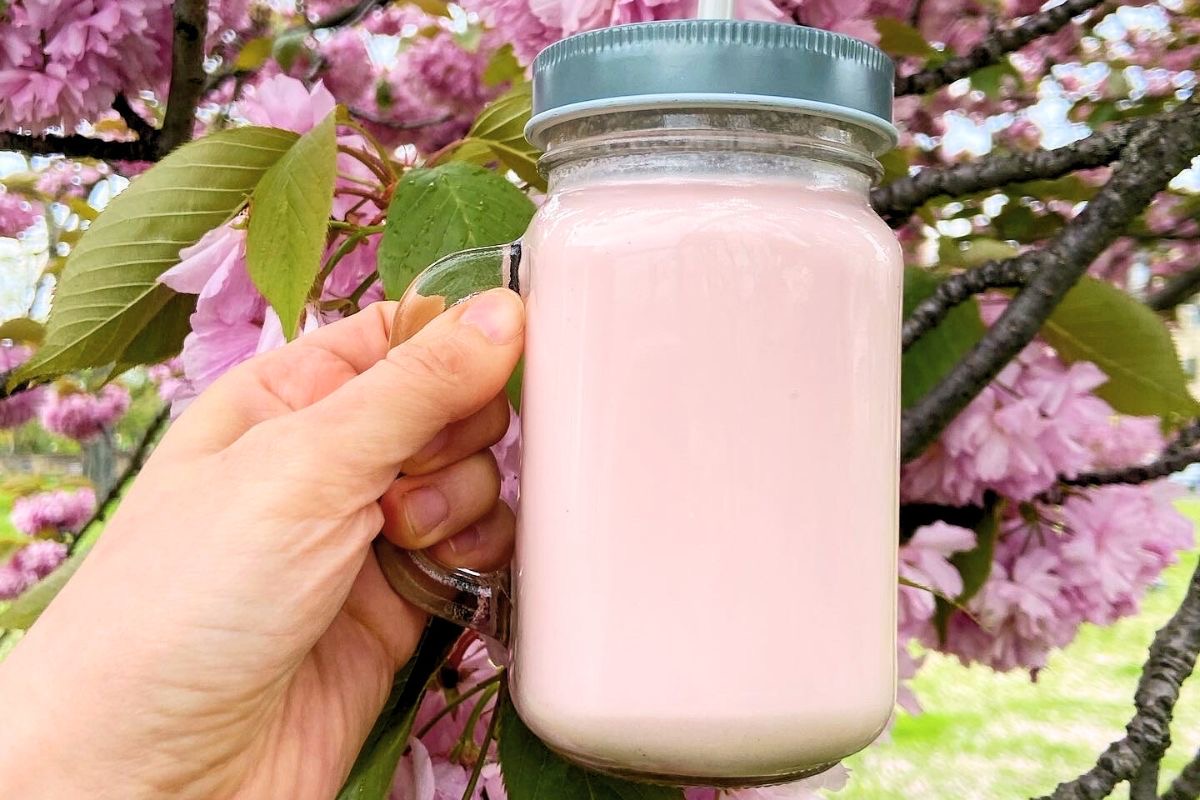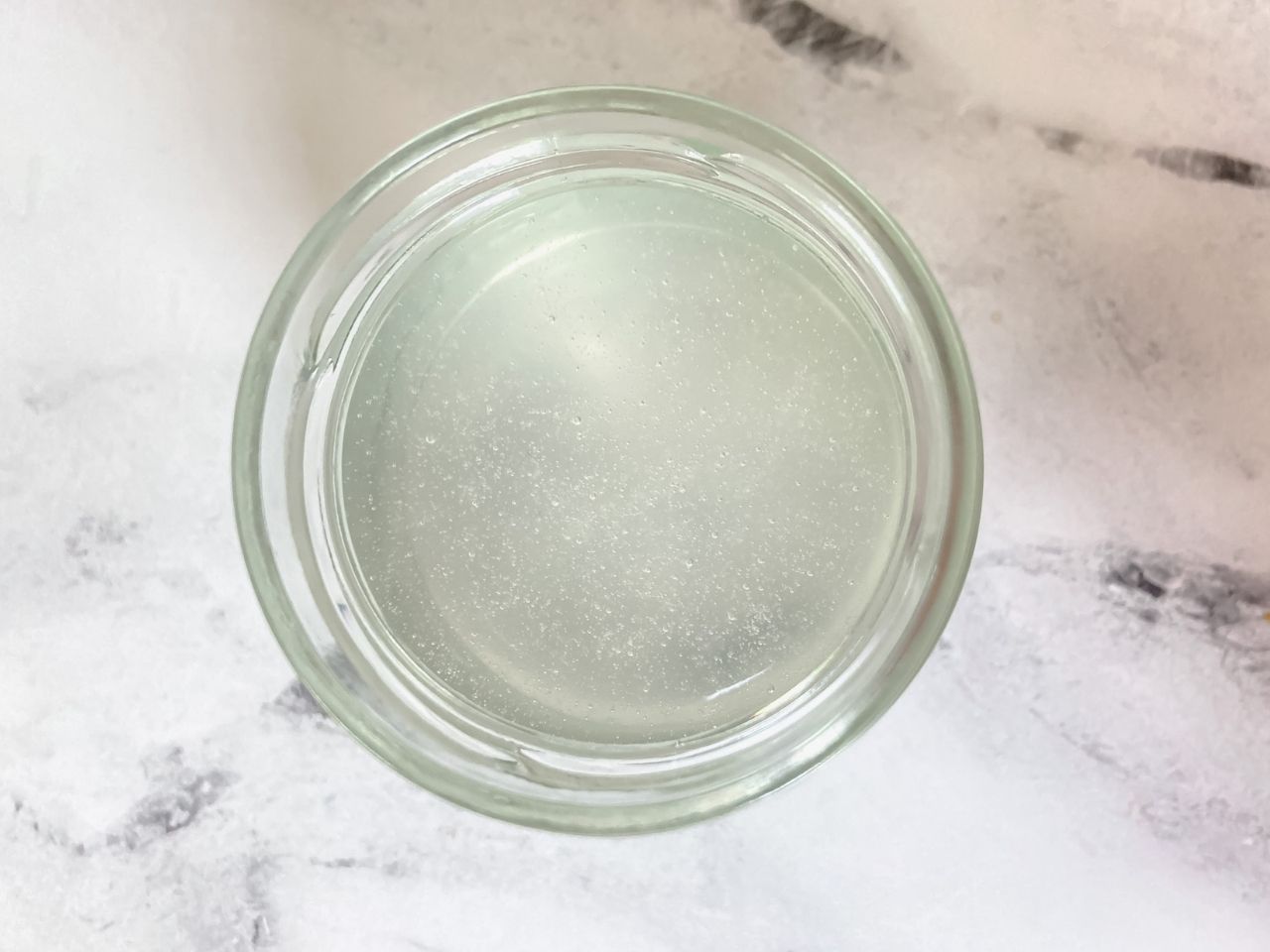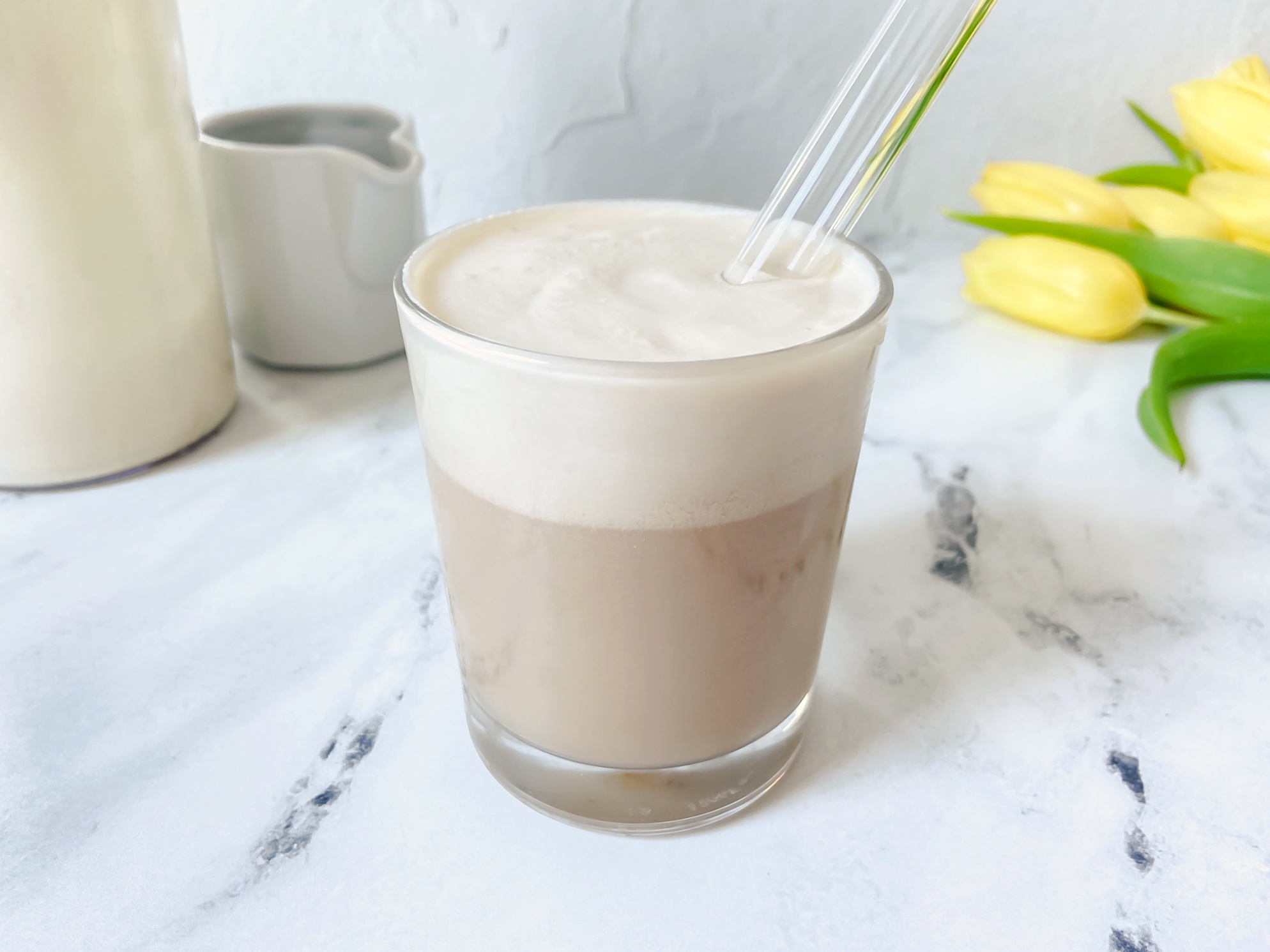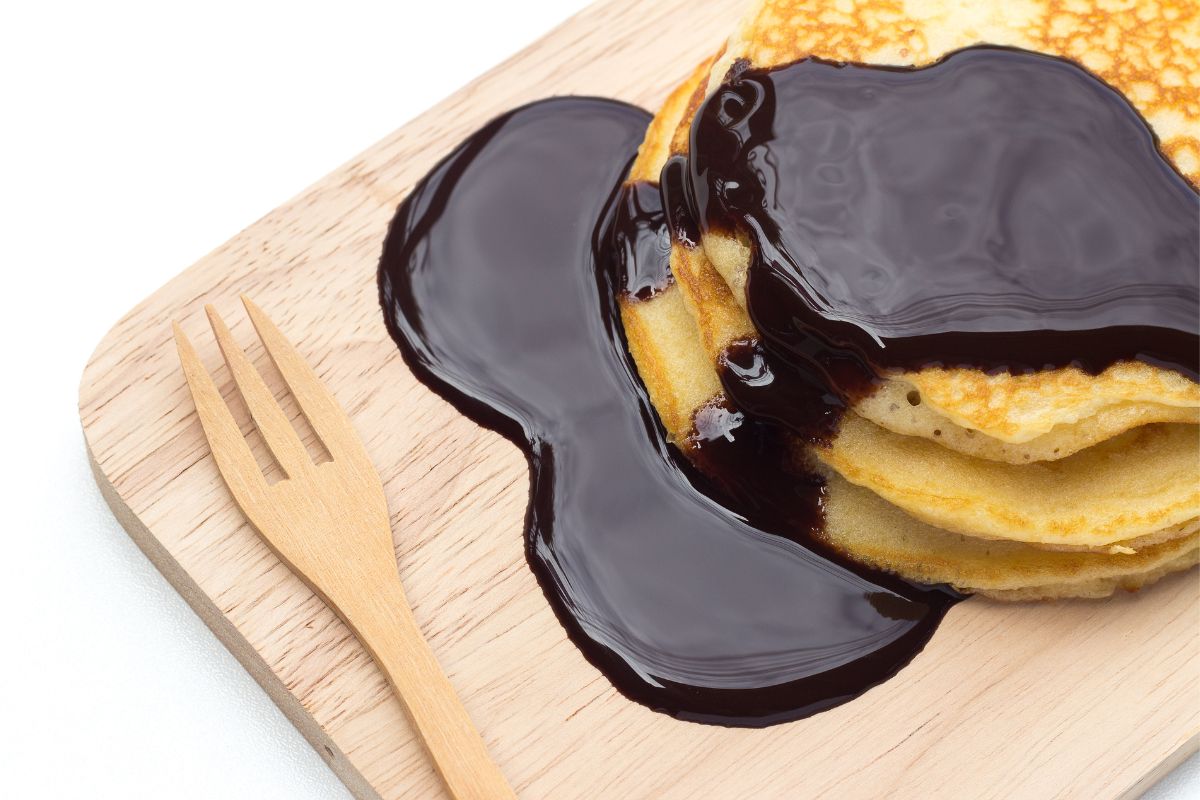How to easily clean the inside of your kettle
Do you have a kettle that needs some cleaning (like an electric kettle with lime scale build-up)?
In this blog post, I will show you my favorite trick to clean the inside of your kettle easily and without harsh chemicals.
This method to descale using natural ingredients works as well for electric kettles as for traditional ones.
What is the white stuff inside a tea kettle?

A kettle is a such a practical kitchen appliance for us tea lovers!
But after using one for a while, you might notice a white, chalky build-up on the inside of your kettle…
That is limescale and it stands out especially on a stainless steel kettle. Yikes!
Limescale occurs when water (which contains minerals like calcium and magnesium) evaporates and leaves those minerals behind.
This scale not only looks unpleasant but it also affects the taste of your tea (or coffee or whatever you use the hot water for).
Also, it can make your kettle work less efficiently.
So it is definitely worth taking some time to clean it out.
The good news is, it’s easy to remove kettle limescale with common natural ingredients (details bellow).
What can I use to descale a kettle?

There are descaling products on the market you can use and I have nothing against using commercial cleaning products, but descaling a tea kettle with natural ingredients is so easy (and cheap), I would recommend everyone to give it a try.
Not a single person I’ve taught this tip to has gone back to using a commercial kettle descaler!
All you need is:
That’s it!
Optionally, you can also use a soft cloth or a brush, but I don’t feel the need for them most of the time.
You only need ONE of these ingredients (vinegar or lemon juice or citric acid) and all work well, so you just can use whatever you have on hand:
Vinegar
You may use white vinegar or apple cider vinegar.
A cheap one will do it: so no need for a fancy vinegar.
Cleaning vinegar also works.
Distilled vinegar won’t be so effective because it has less acetic acid.
How much vinegar you’ll need
Mix water and white vinegar in equal parts.
WARNING:
Vinegar solution will smell quite strong as you heat it.
So, be sure there is good ventilation in the room and that you don’t inhale the vapors.
Lemon juice
You may use fresh pressed juice or concentrated lemon juice from a bottle. Lemon juice that was stored frozen also works.
Lime lemon also works.
Lemon juice or lime juice are great alternatives if you want to avoid the vinegar smell.
It’s also a great option if your kettle manufacturer indicates to avoid cleaning their kettles with vinegar.
How much lemon juice you’ll need
Some articles online recommend a solution of water and lemon juice in equal parts, but in my experience, it’s enough using the juice of a lemon (around 3 Tbsp.) for every 500 ml. water.
ALTERNATIVE METHOD:
Some people also put lemon slices in the water.
You may be able to do this with traditional kettles, but most electric kettle manufacturers recommend not to put any solids into them.
Citric acid
Citric acid is a compound extracted from lemons.
It’s used as a natural preservative and to give sour taste to beverages and foods.
It turns out, it’s also as a natural descaler.
There is a powdered version as well as a liquid version; since the powdered one weight less and takes less space in the cupboard, this is the one I prefer.
Where I live, it’s easily found in the cleaning aisle of drugstores.
In other countries you may also find it in pharmacies, cleaning stores, or in the canning section of supermarkets.
As I always have some at home for cleaning purposes, this is my favorite ingredient to remove scale.
How much citric acid you’ll need
You’ll only need 1-2 Tbsp. citric acid powder for 1 liter water.
WARNING:
Some sources support the theory that you shouldn’t boil a citric acid solution.
The reason behind this is that the citric acid would react to the calcium carbonate of the water, building white stains of calcium citrate complex. These won’t go away.
However, I couldn’t find studies that support this claim.
I use citric acid to descale just as I would do with vinegar or lemon juice: bringing it to a boil with water (this is also how it’s recommended in the package of the citric acid I use).
Until now I only had good results, but if in case of doubt, don’t heat citric acid above 40 °C (104 °F), using a warm water solution instead.
How to descale a kettle easily with natural ingredients

I use this cleaning method for my electric tea kettle, but this trick to descale using natural ingredients works just as well for a traditional kettle.
Time needed: 30 minutes
How to clean an (electric) kettle easily with natural ingredients
- Add your natural descaler of choice to the kettle
Put vinegar (the same amount as water), lemon juice (3 Tbsp. juice or the juice of 1 lemon for 500 ml. water) or citric acid (1 Tbsp. per 500 ml. water) in the inside of the water cooker you want to clean.
- Add water
Fill with water up to around 3/4 or enough to cover the affected areas.
- Heat
Bring the water with the vinegar or lemon juice to a boil (some people recommend to heat citric acid only up to 40 °C – 104 °F)
- Remove from heat or unplug
Let the water sit and cool down for around 15-30’.
- Discard the water out
If there are still areas with limescale, remove them gently with a soft sponge or bottle brush.
If your kettle has a water filter, you can scrub it with a brush.
Don’t touch the heating element on the bottom though. - Rinse
Finally, fill your kettle with fresh water and boil.
Discard this plain water too. Repeat the process if it still smells acidic (although usually once is enough).
Now you have a limescale free and clean kettle!
How to prevent limescale in my kettle in the first place
With the trick we just saw, getting the inside of your kettle clean won’t be difficult anymore.
But anyway, there are little things you can do to keep your kettle free from hard water deposits as long as possible:
- Use filtered water
- Don’t leave water in the kettle after using it: only heat as much as you need (this will also save you energy)
- Rinse the kettle afterwards (allegedly, drying it would be ever better, but I personally don’t do it because it’s too much work for me)
FAQs about cleaning the inside of a kettle
A kettle is a type of pot used for boiling water. It commonly has a lid and a handle.
An electric kettle (also known as water cooker or electric water boiler) is an electric device with an internal heating element.
What this means for washing: you can clean a traditional kettle with water and dish soap, but you should never immerse an electric kettle in water (this could damage the electrical components and pose a safety hazard!).
Other than that, the principle for descaling them on the inside is the same.
Yes! In my experience, baking soda is slightly less effective as vinegar, lemon juice or citric acid when it comes to descaling, but it also works.
So, if you want to use baking soda to clean your kettle, feel free to do so.
You’ll need around a teaspoon baking soda for every 500 ml water.
The procedure is the same as when using vinegar, lemon juice or citric acid.
This depends on how often you use it and how hard your tap water is, but try not to wait until there are heavy deposits of scale (I waited this time so I could take pictures of my kettle with a thick layer of limescale).
As a rule of thumb, clean the inside every 6-8 weeks.
If you live in an area with hard water, you may need to descale it every 2-3 weeks; 2 times in year would be enough for regions with soft water or if using bottled water.
I hope you find this method to clean your kettle as convenient as I do.
Whether your kettle is traditional or electric, this method will work perfectly and without special cleaning products required. So give this trick a try the next time you need to clean your kettle!
After you’ve cleaned you water cooker, how about treating yourself with some tea?







Thank you very much for this. This trick was sooo helpful! My water boiler looks like new and I didn’t have to scrub at all!
So happy to hear it. It really works!
I especially appreciated the use of natural and eco-friendly cleaning solutions, which not only effectively removed limescale but also ensured the safety of my health and the environment. The article’s emphasis on preventive measures, such as regular descaling, will undoubtedly extend the lifespan of my kettle and enhance the taste of my beverages. DreamyCup.com has truly delivered a unique and valuable resource for anyone seeking to keep their kettle sparkling clean. I can’t wait to implement these tips and enjoy a cup of tea from a kettle that looks and functions as good as new!
Thank you for such a thoughtful comment! I hope you enjoy your drinks with the clean kettle 🙂